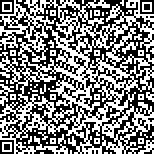| 摘要: |
| 利用切向超滤技术从厦门海域水体中提取制备出不同来源(海洋、河口与河流)的胶体及不同粒径的海洋胶体,分析并比较其多糖的醛糖组成。结果表明,各种胶体含有相同的醛糖组分,即鼠李糖、岩藻糖、阿拉伯糖、木糖、甘露糖、葡萄糖和半乳糖,粒径相同的高分子量胶体以葡萄糖和半乳糖为优势组分,海洋胶体与河流胶体的醛糖组成相似,低分子量海洋胶体的鼠李糖丰度是高分子量海洋胶体的2倍多。这些结果进一步说明了浮游植物和陆源输入是胶体有机物的重要来源,微生物作用和原生动物的摄食可能使天然水体中胶体物质的醛糖组成趋于一致。 |
| 关键词: 切向超滤 厦门海域 胶体 醛糖组成 |
| DOI: |
| 分类号: |
| 基金项目:国家教育部高等学校骨干教师计划基金资助项目,2000—2002;厦门大学预研基金资助项目(B类),2003xdyy40号 |
|
| ALDOSES COMPOSITION OF POLYSACCHARIDES IN COLLOIDS FROM XIAMEN BAY |
|
ZHENG Xue-Hong, ZHENG Ai-Rong, CHEN Zu-Feng
|
|
Department of Oceanography/Institute of Subtropical Oceanography,Xiamen University, Xiamen, 361005
|
| Abstract: |
| Carbohydrate is the main biochemical component of colloidal matter in natural water. It has specific composition and structure, and the molecular information of it can help discover the source, transformation and fate of colloidal matter.
Marine, estuarine and riverine colloids, and marine colloids with different size (1–10kDa and 10kDa–0.22μm) were recovered by cross-flow ultrafiltration from Xiamen Bay, concentration factor of them between 40 and 60. All kinds of colloids were desalted with distilled water, except riverine colloids. Then all of them were lyophilized to recover dry power. Polysaccharides in colloids were hydrolyzed with 4mol/L trifluoroacetic acid (TFA) at 120°C for 3h. Cooling the solution to room temperature, the hydrolyzed solution was removed under stream of nitrogen. Residual TFA was removed with isopropanol by repeated dryness. Aldoses were reduced to alditols with NaBH4 and 1 mol/L NH3?H2O at room temperature for 1h. Surplus NaBH4 were decomposed by addition of glacial acetic acid, and residual NaBH4 were removed by repeated evaporation with methanol under stream of nitrogen. Alditols were acylated in prydine-acetic anhydride (V:V=1) for 1h at 100°C. Alditol acetates were analyzed by Agilent 6890N gas chromatography, using a capillary column (HP-5, 30m×0.32mm×0.25μm) with constant flow of 1ml/min, a inlet maintained at 250°C and used in the splitless mode (purge flow was 10ml/min 0.5min after injection) with nitrogen as carrier gas, and a flame ionization detector (300°C). The flow of hydrogen, air and nitrogen for detector was 30, 400 and 25 ml/min, respectively. The oven temperature was increased from 120°C to 210°C at 3°C/min, then held 4mins. Relative retentive time and relative response factor were used for qualitative and quantificational analysis, respectively. The method used had a high and constant recovery and° excellent recurrence, because recoveries of standard aldoses were 94.8%–108.4% and RSD of aldoses in paralleled colloids samples were 0.14%–3.00%.
The results showed that, rhamnonse, fucose, arabinose, xylose, mannose, glucose and galactosewere found in all kinds of colloids. Aldoses composition were surprisingly similar in two kinds of marine colloids with the same size (10kDa–0.22μm). Glucose and galactose were dominant, each of them over 20%. The abundance of rhamnose, fucose and mannose was similar (12%–15%), followed by xylose (8%–11%) and arabinose (4%–5%). For marine colloids with size between 1kD and 10kDa, rhamnose was the most abundant (~ 30%), the abundance of mannose, glucose and galactose was very close (17%–18%), fucose was l1.08%, arabinose and xylose was only 2%–3%, respectively. Glucose was the most abundant (36.41%) in estuarine colloids, followed by galactose (22.03%), xylose (15.37%), fucose and mannose (~8%), rhamnose and arabinose (4%–6%). Riverine colloids was dominated by glucose (31.81%), the abundance of galactose and mannosewas similar (15%–17%), followed by fucose (13.5%), xylose, and rhamnose (~10%), and arabinose (2.82%). The apparent variation in marine colloids with different size was the abundance of rhamnose, which reflected the role of microbe in organic matter degradation. For marine, estuarine and riverine colloids with the same size, glucose and galactose were the most abundant, and the aldoses composition of marine and riverine colloids was similar. All results suggested that, phytoplankton and terrestrial inputs were important sources of marine colloids, and microbial process and protozoan grazing could make aldoses composition of colloidal matter in natural water become uniform to some extent. |
| Key words: Cross-flow ultrafiltration, Xiamen Bay, Colloids, Aldoses composition |
